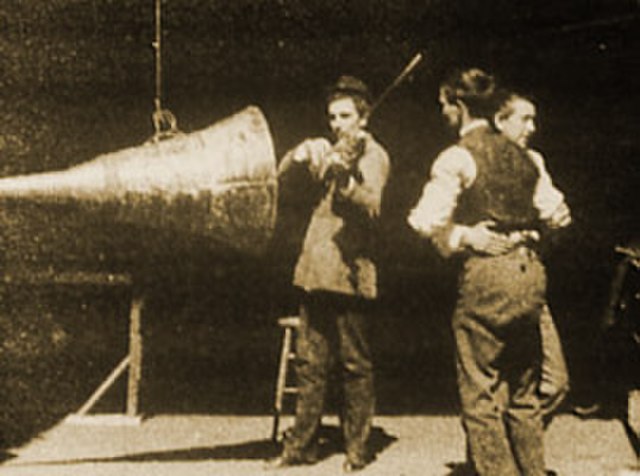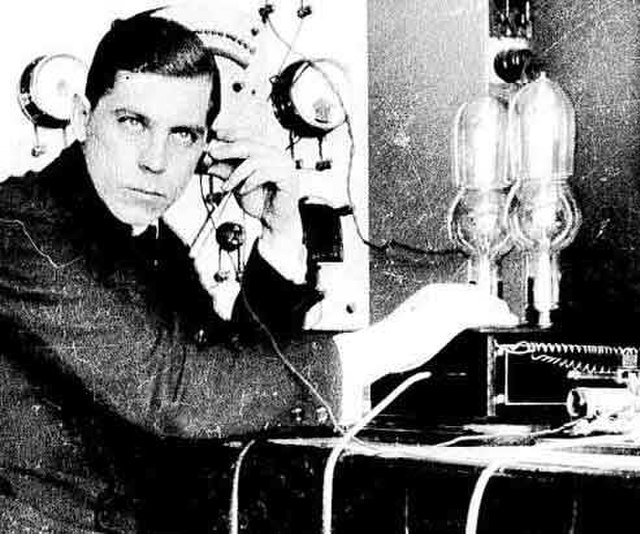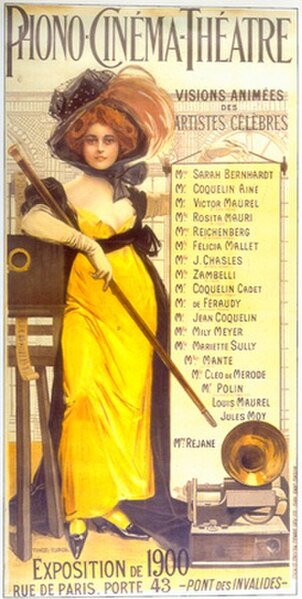Vitaphone was a sound film system used for feature films and nearly 1,000 short subjects made by Warner Bros. and its sister studio First National from 1926 to 1931. Vitaphone is the last major analog sound-on-disc system and the only one that was widely used and commercially successful. The soundtrack is not printed on the film, but issued separately on phonograph records. The discs, recorded at 33+1⁄3 rpm and typically 16 inches (41 cm) in diameter, are played on a turntable physically coupled to the projector motor while the film is projected. Its frequency response is 4300 Hz. Many early talkies, such as The Jazz Singer (1927), used the Vitaphone system. The name "Vitaphone" derived from the Latin and Greek words, respectively, for "living" and "sound".
Warner Bros. Vitaphone logo
A Vitaphone projection system was demonstrated in 1926. Engineer E. B. Craft holds a soundtrack disc. The turntable, on a massive tripod base, is at lower center.
Don Juan premiered in New York City.
A sound film is a motion picture with synchronized sound, or sound technologically coupled to image, as opposed to a silent film. The first known public exhibition of projected sound films took place in Paris in 1900, but decades passed before sound motion pictures became commercially practical. Reliable synchronization was difficult to achieve with the early sound-on-disc systems, and amplification and recording quality were also inadequate. Innovations in sound-on-film led to the first commercial screening of short motion pictures using the technology, which took place in 1923. Before sound-on-film technology became viable, soundtracks for films was commonly played live with organs or pianos.
1908 poster advertising Gaumont's sound films. The Chronomégaphone, designed for large halls, employed compressed air to amplify the recorded sound.
Image from The Dickson Experimental Sound Film (1894 or 1895), produced by W.K.L. Dickson as a test of the early version of the Edison Kinetophone, combining the Kinetoscope and phonograph.
Eric M. C. Tigerstedt (1887–1925) was one of the pioneers of sound-on-film technology. Tigerstedt in 1915.
Poster featuring Sarah Bernhardt and giving the names of eighteen other "famous artists" shown in "living visions" at the 1900 Paris Exposition using the Gratioulet-Lioret system.







